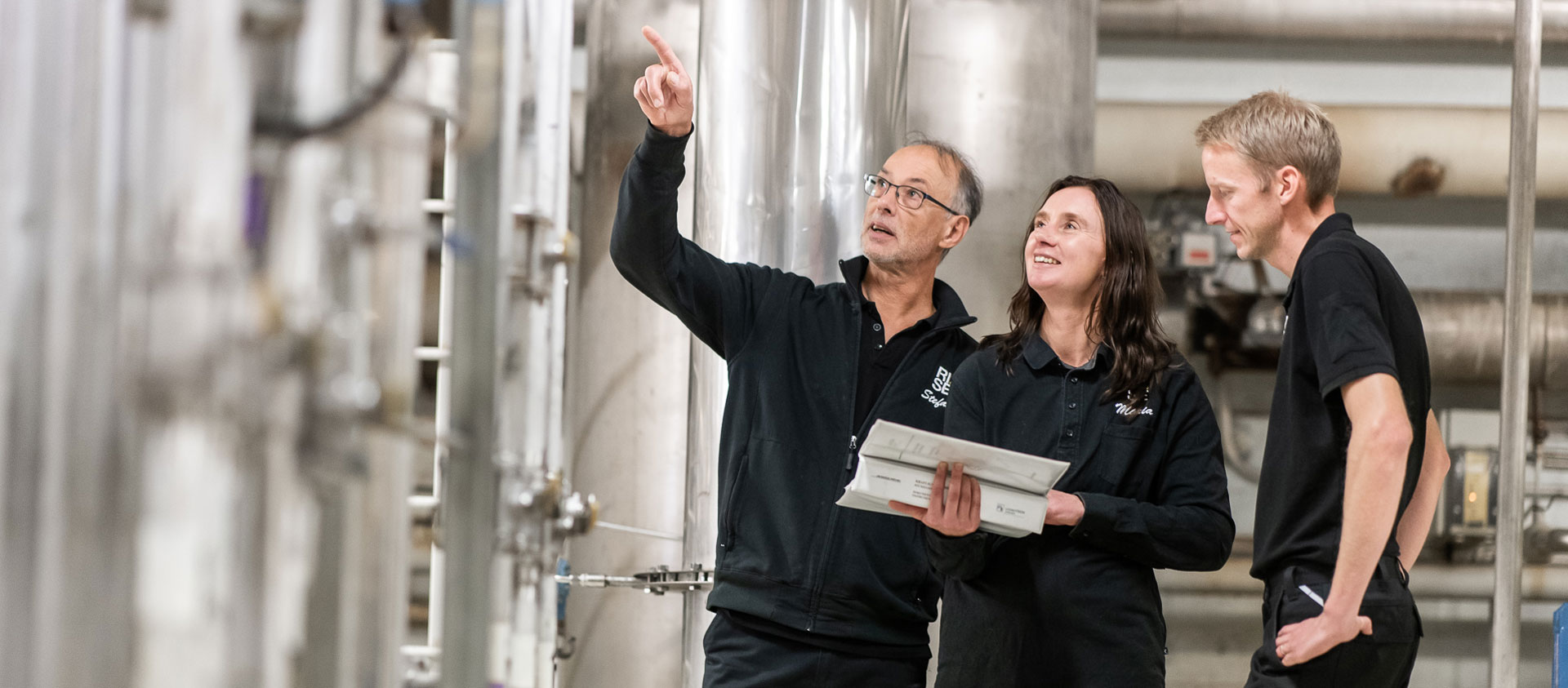From an EU perspective, North-Middle Sweden is below average in terms of investment in research and innovation. At the same time, it is a region well placed to create sustainable regional development through rich natural resources and prominent industries. A number of initiatives are currently underway to make better use of these opportunities. Here are a few examples.
To strengthen the region’s research and innovation capacity, North-Middle Sweden has a joint strategy for industrial transformation. Among other things, it states that Dalarna, Gävleborg and Värmland will link industry and researchers in so-called test beds.

Peter Edberg, Project Manager at Paper Province
A test bed can be physical or virtual, and often offers cutting-edge expertise in combination with advanced equipment that operators can use to test, demonstrate and evaluate new ideas. For example, by making prototypes.
“Test beds are crucial for increasing Sweden’s innovative strength. Since it costs a lot to halt ordinary production for the benefit of research and development, it is perfect to move that activity to a test bed,” says Peter Edberg, project manager at Paper Province, who often connects different enablers of innovation on open test beds.
Giving ideas a boost
The test beds test ideas in real production environments, without the need for the idea holders to have their own equipment or expertise. In North-Middle Sweden, there are several examples of both physical environments and collaborative projects that provide opportunities for idea-makers to develop, test and commercialise the next generation of sustainable products.
In Värmland, Circlab focuses on 3D printing with forest-based materials (swedish), LignoCity specialises in the development of the forest raw material lignin (swedish), and UMV Coating Systems and Brobygrafiska use test beds to develop environmentally friendly packaging (swedish). All with access to both researchers and business networks. Karlstad University has expertise and test equipment closely linked to packaging, but also other areas related to the bioeconomy and circular economy.
One innovator who discovered the benefits of developing on a test bed is the entrepreneur and dance teacher Patricia Edvardsson.
“A test bed allows you to test and create an opportunity from an idea. In my case, Circlab helped me develop a prototype of a shoe heel for dance shoes. I chose to make it out of wood because we have so many trees in Värmland. It felt absolutely right to use bio-based material instead of plastic,” she says.


Patricia Edvardsson, entrepreneur and dance teacher
Mix of industries
3D printing is also something that Gävleborg has taken into account. There is Sandbacka Science Park which, in addition to 3D printing and other manufacturing, offers an automation lab, a data centre and an advanced training centre for CNC processing, as well as a test bed environment for energy optimisation.
RISE in Hudiksvall also offers test environments that promote collaboration between researchers and companies. The RISE test bed for digitalisation and their Fiberlab are both examples of environments where industrial customers can conduct development and research collaborations.
“We work a lot with test beds and have everything from simple laboratories in wardrobes to super-advanced particle accelerators. We test both hardware and software in the plants,” explains Martin Askne, innovator at RISE.

Martin Askne, innovator at RISE.
“We work a lot with test beds and have everything from simple laboratories in wardrobes to super-advanced particle accelerators. We test both hardware and software in the plants,” explains Martin Askne, innovator at RISE.
One example is collaborating with two companies that are testing cybersecurity solutions in a test bed. Another example is helping to develop 3D printed biomaterial.
“Working with test beds is a way for researchers to get in touch with companies and work on concrete solutions. For companies, they will have access to external research expertise. It’s a win-win situation. But it’s not always easy to get funding for the projects,” says Martin Askne.
HudikHem, a test bed for the real estate industry, is located in the same city. Other examples include the University of Applied Sciences in Gävle’s test bed for steel cooling and their pedal truck factory for testing Lean, which is widely used by companies looking to streamline their processes and offerings.
HudikHem, a test bed for the real estate industry, is located in the same city. Other examples include the University of Applied Sciences in Gävle’s test bed for steel cooling and their pedal truck factory for testing Lean, which is widely used by companies looking to streamline their processes and offerings.
Finding future building solutions together
In Dalarna, the construction sector has a history of collaborating to test and develop new, more sustainable ways of building. One example is the VillaZero (swedish) collaboration project. The project resulted in a carbon-neutral small house in Borlänge and has provided a unique opportunity for everyone involved to learn how to build for a more sustainable future. Today, the house is classified as the world’s first carbon-neutral small house.
Through this project, we have challenged both ourselves and many others in the industry to improve their processes. We want the industry to be aware that it is possible to build with sustainable methods,” explains Helena Tallberg, project manager for VillaZero.
Research and innovation parks
Another type of open environment for realising ideas is known as research parks. Dalarna Science Park in Borlänge is an opportunity for anyone who wants to test and develop new solutions, regardless of the industry. Well-developed processes are offered here to both new contractors and established companies. There is also access to office environments, collaboration spaces and creative environments for those who want to bring their ideas to life. Karlstad Innovation Park in Värmland and Sandbacka Science Park in Gävleborg are similar, offering creative environments where business ideas are developed together with others.









